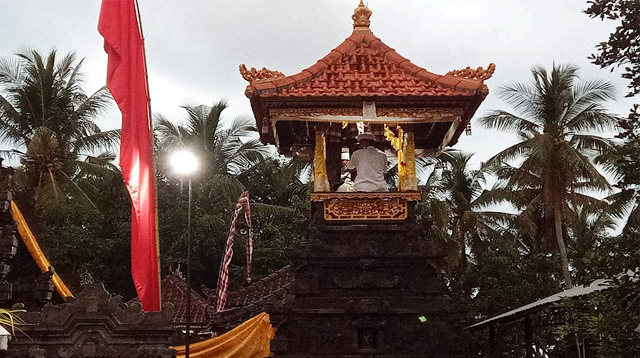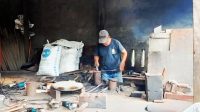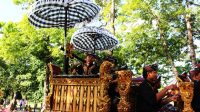- KULKUL or wooden split drum is a traditional means of communication used by Balinese community since ancient times because it is an integral element of traditional architecture
- Though modern era has replaced some of the tasks, the sacred function of kulkul will still be used to strengthen the message en masse due to its magical power.
Traditional Balinese architecture for public space like meeting hall and sacred place like temples is commonly equipped with bale kulkul or kulkul tower. By and large, this tower is placed in the outer corner of the area such as customary or irrigative organization (subak) meeting hall, temple or noble house.
From a physical point of view, this building is usually made higher than the surrounding buildings or the height is made in such a way that later the sound of the kulkul can reach a wider area of the hamlet or customary village area.
Functions
When placed at meeting hall, the kulkul is functioned to remind all villagers of attending a social-religious event such as meeting and mutual assistance or administrative-related activities. Besides, it is functioned to deliver information about death of a villager, chaos, theft and fire. However, each function has different rhythm in terms of the beating so that people can easily catch the point of the message delivered.
Apart from being a messenger, the sound of the kulkul can also remind those who have forgotten about a meeting or praying activities to be held.
Meanwhile, when placed at temple or other sacred places, kulkul is functioned to complete the sound of panca nada or five tones accompanying the ritual procession along with other four tones like sacred bell, gamelan, mantra and chants. Harmony produced is believed to be able to influence the soul in religious ritual and to bring human soul to enter into sacrificial realm.
Ritual
Prior to being used, the bale kulkul is inaugurated or pelaspas in order to have holiness or sacredness, have the power to convey messages and provide safety to the people who use the tool.
As a traditional means of communication, Balinese people and other traditional communities have been using it since ancient times. For example, the kulkul in the meeting hall for the members of the hamlet, is used to disseminate messages to the hamlet members such as in the case of delivering news of the death of a hamlet resident, a call for a meeting, an earthquake, fire, theft or other emergency events.
Each message has a different beat rhythm so that the residents of the hamlet can easily catch the message and then respond to it according to the type of message. Of course, the rhythm of these strokes can be different from one area to another depending on the agreement they make.
To make it look more wonderful, attractive and sturdy, the customary village of Bali erects the bale kulkul tower and other buildings are made and designed to be smaller in size upwards and then affixed with typical Balinese ornaments. At least, it is made in harmony with the architecture of the main building.
When coming into modern era, people may have replaced social communication functions with telephone or collective social media, For instance, information of an event can be broadcast through WhatsApp group. By this, the information sent can reach villagers who are living outside the village, island or foreign country. The kulkul must still be beaten in accordance with stipulation in the customary village bylaw (awig-awig).











